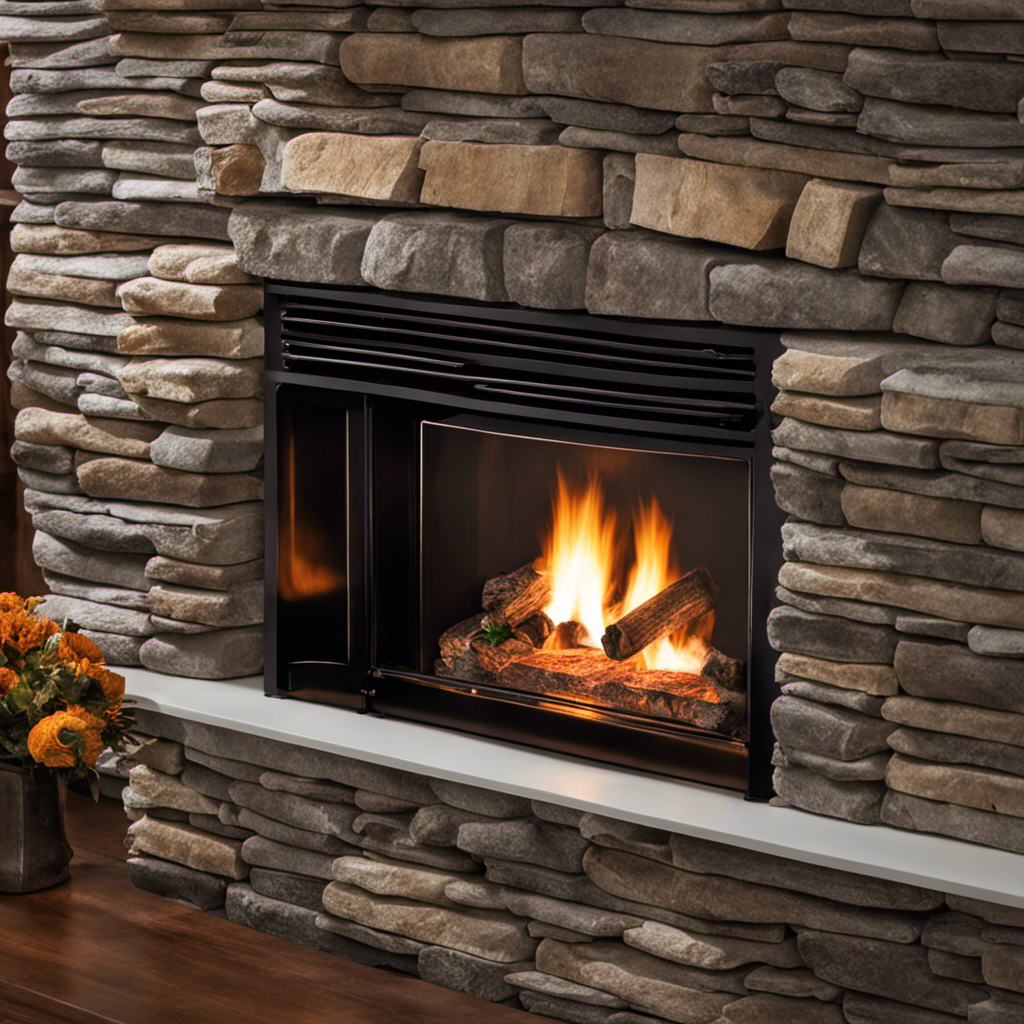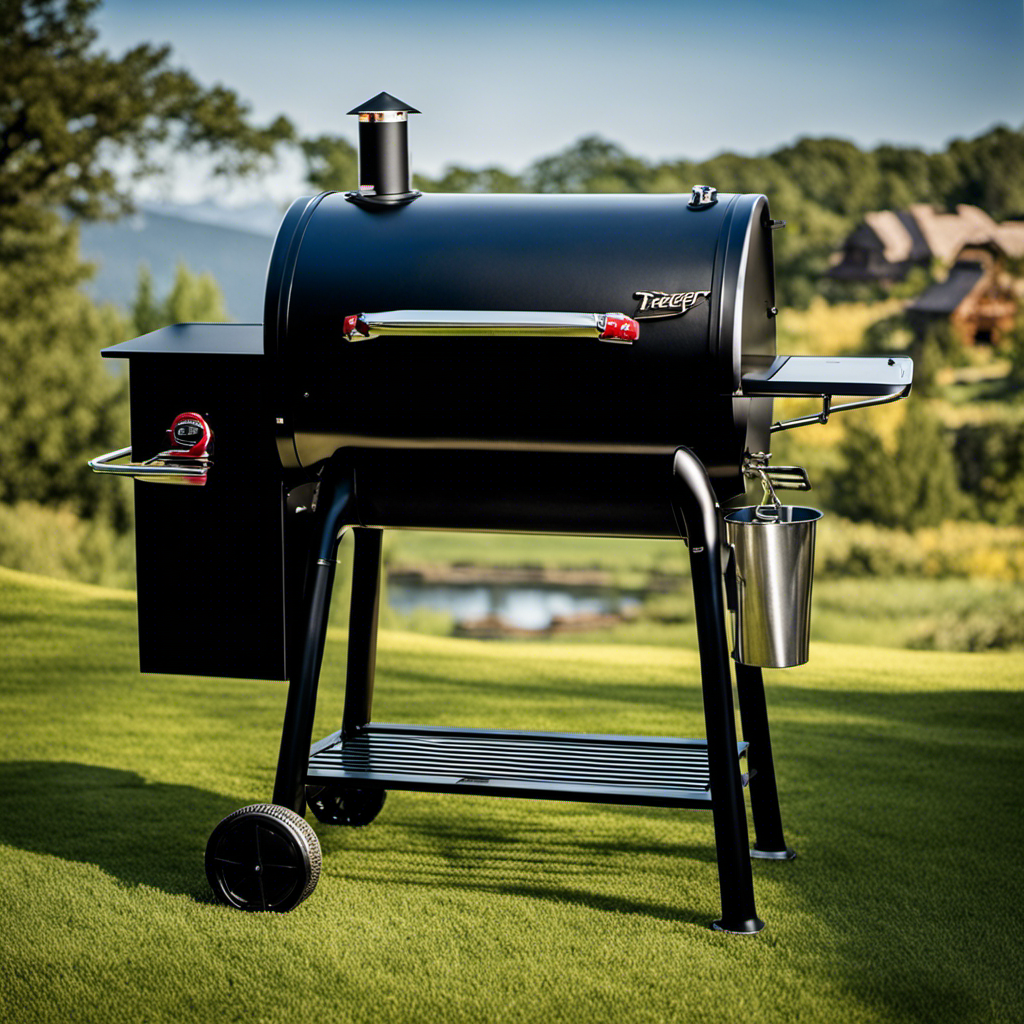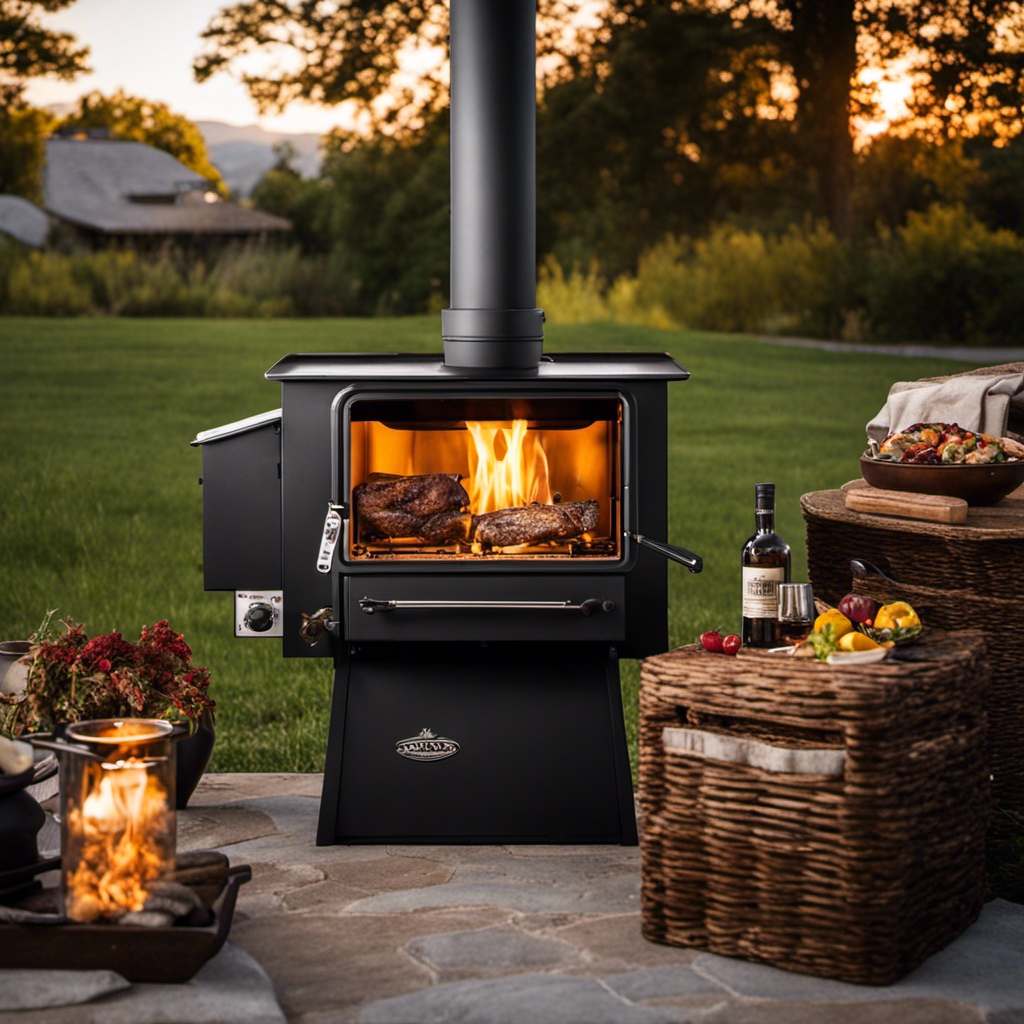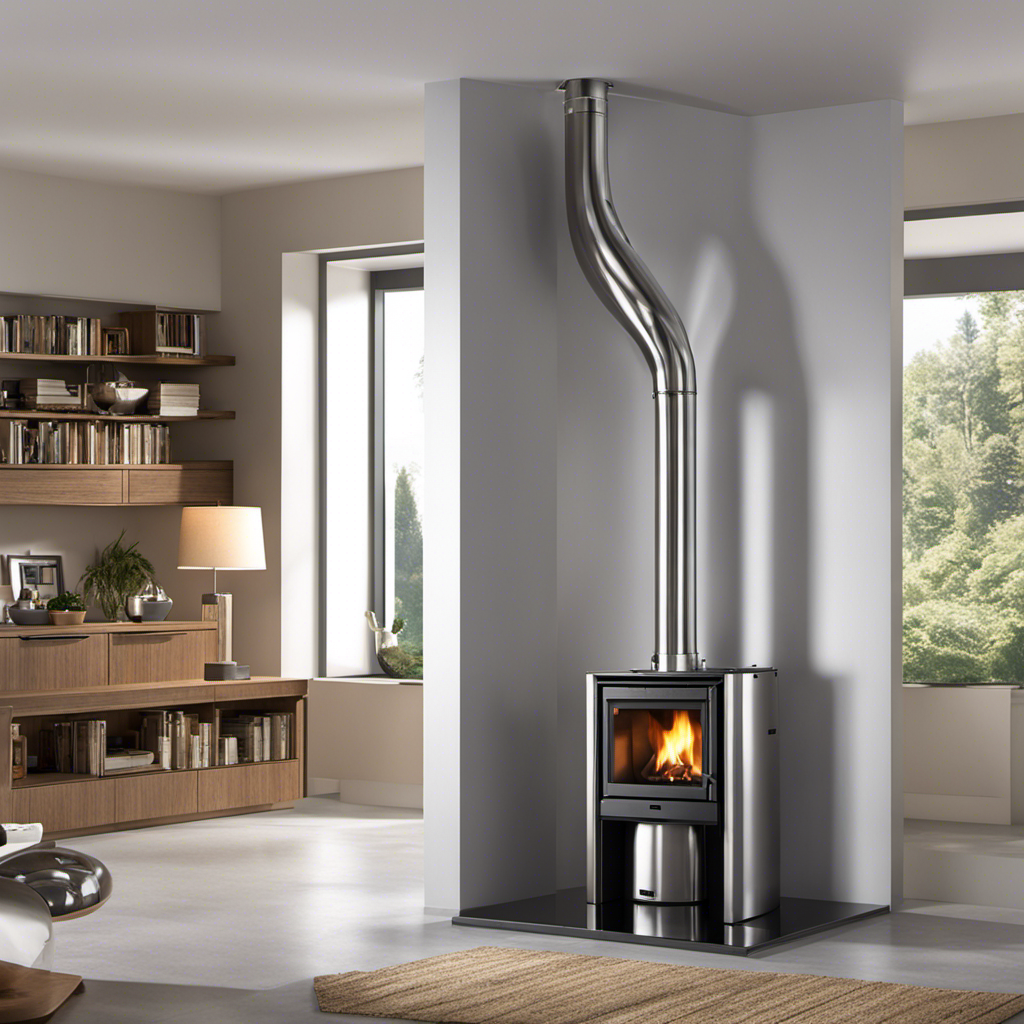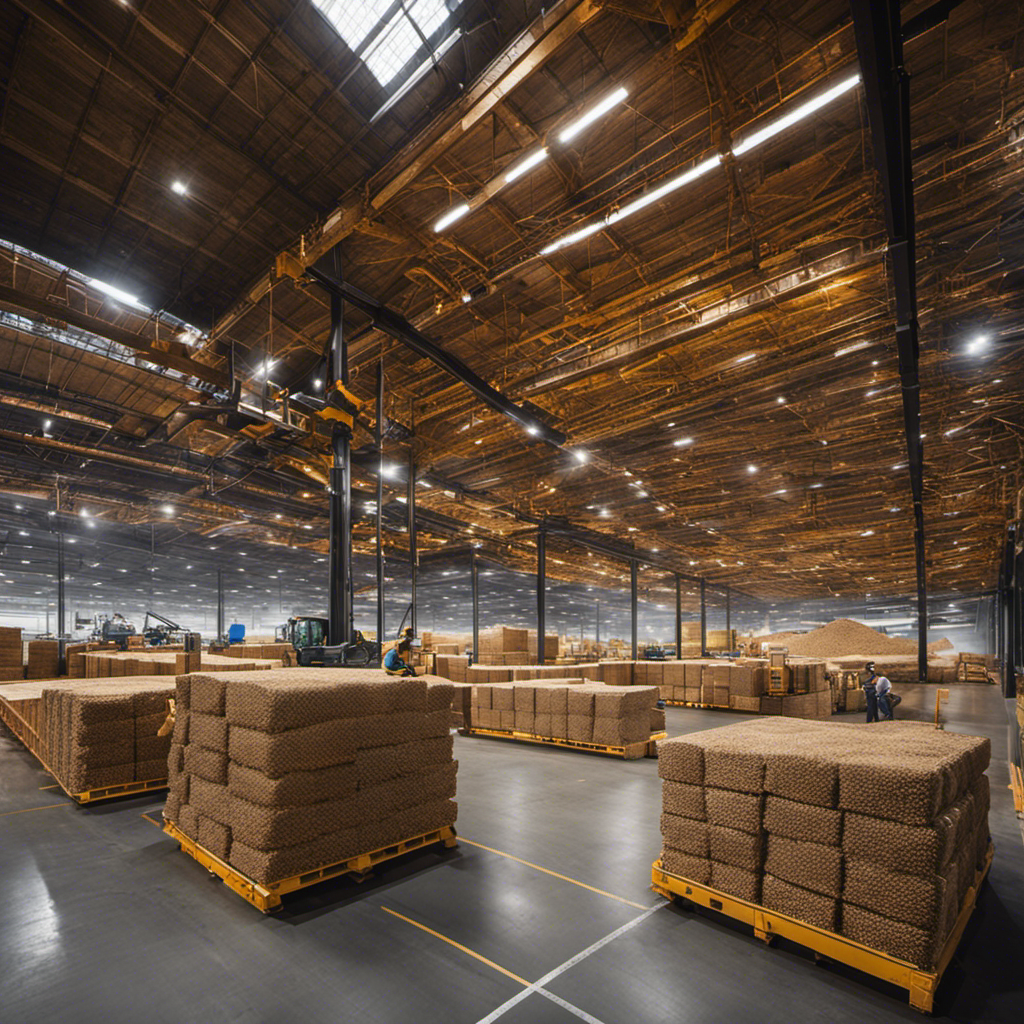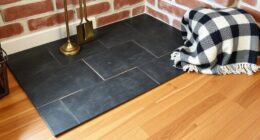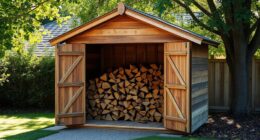I frequently hear the phrase, “If the ignitor is wrong, the stove won’t light.” Therefore, it is crucial for my wood pellet stove to have the ignitor installed correctly.
In this article, I’ll share my knowledge and expertise on how to determine if the ignitor is installed properly. By understanding its purpose, checking for proper installation, and assessing its glow and heat output, you’ll be able to confidently troubleshoot and maintain your wood pellet stove’s ignitor.
Key Takeaways
- Proper installation of the ignitor is crucial for its correct and efficient functioning.
- Checking and ensuring secure electrical connections, correct polarity, and undamaged wiring is important for proper ignitor installation.
- Misalignment of the ignitor can result in poor ignition or failure to ignite, so it should be centered and in direct contact with pellets.
- Verifying the ignitor’s connection to the power source, testing its functionality, and considering replacement options are necessary for troubleshooting ignitor problems.
Understanding the Ignitor’s Purpose
You’ll know if you installed the ignitor right on your wood pellet stove because it is responsible for igniting the pellets and starting the fire. The ignitor is a crucial component of your stove’s operation, and understanding its purpose is essential for troubleshooting and maintenance.
When the ignitor is functioning properly, it will emit a bright orange glow, indicating that it is heating up and ready to ignite the pellets. If you notice that the ignitor is not glowing or is producing a weak glow, it may require troubleshooting or maintenance.
This could involve checking the electrical connections, cleaning the ignitor, or replacing it if necessary. Proper ignitor installation is vital to ensure that it functions correctly and efficiently, leading to a successful fire-starting process.
Checking for Proper Ignitor Installation
To ensure correct installation of the ignitor on your pellet stove, simply check if the wires are securely connected. Troubleshooting ignitor problems often starts with a careful examination of the installation process. One common mistake is not properly connecting the wires to the designated terminals. This can lead to poor electrical contact and prevent the ignitor from functioning effectively. It is crucial to ensure that the wires are tightly secured and free from any damage or fraying.
Additionally, double-check that the polarity of the connections is correct, as reversing the wires can also cause ignition issues. By diligently inspecting the wiring connections, you can minimize the chances of encountering ignitor problems and ensure smooth operation of your pellet stove.
When it comes to identifying the correct ignitor model for your pellet stove, there are a few key factors to consider.
Identifying the Correct Ignitor Model
When identifying the correct ignitor model, it’s important to consider factors such as compatibility and specifications. To ensure a successful installation and avoid any issues, here are four key steps to follow:
-
Consult the stove’s manual or contact the manufacturer to determine the specific ignitor model recommended for your stove. Ignitor compatibility is crucial for proper functioning.
-
Check the size and shape of the ignitor. Various models exist, and it’s essential to match the dimensions of the new ignitor to the old one.
-
Consider the power requirements. Ignitors may have different voltage or wattage ratings, so it’s crucial to select a model that matches your stove’s electrical specifications.
-
Take note of any additional features or requirements. Some ignitors may have specific installation instructions or compatibility with certain fuel types.
By carefully considering these factors, you can ensure that you select the correct ignitor model for your wood pellet stove and avoid any compatibility or troubleshooting issues.
Now, let’s move on to ensuring proper ignitor alignment for a successful installation.
Ensuring Proper Ignitor Alignment
When it comes to ensuring proper ignitor alignment, troubleshooting is an essential step. Incorrect alignment can lead to various issues, such as poor ignition or even complete failure to ignite.
Ignitor Alignment Troubleshooting
If the ignitor is misaligned, it may not properly ignite the wood pellets in your stove. Ignitor maintenance is crucial to ensure efficient and consistent ignition. When troubleshooting common ignitor problems, the first step is to check for any misalignment. Start by inspecting the ignitor’s position. It should be centered and in direct contact with the wood pellets. If it seems off-center or tilted, it may need to be realigned. Gently adjust the ignitor to position it correctly.
Additionally, examine the ignitor’s wire connection. Ensure that it is securely attached and free from any damage. By properly aligning and maintaining the ignitor, you can prevent ignition issues and ensure optimal performance of your wood pellet stove.
Moving on to signs of incorrect installation…
Signs of Incorrect Installation
In the previous section, we discussed troubleshooting techniques for ignitor alignment issues. Now, let’s focus on signs that indicate an incorrect installation of the ignitor.
It’s crucial to assess the ignitor’s performance to ensure it is properly installed and functioning optimally. Here are some indicators to look out for:
-
No heat production: If the ignitor fails to generate any heat, it could be a result of incorrect installation.
-
Inconsistent ignition: If the ignitor only ignites sporadically or takes longer than usual to light the pellets, it may not be installed correctly.
-
Excessive wear and tear: An improperly installed ignitor may show signs of premature wear, such as cracked or damaged elements.
-
Ignitor failure: If the ignitor stops working altogether, it could be due to an incorrect installation or a faulty connection.
By being aware of these signs, you can troubleshoot and address any issues with the ignitor’s installation.
Now, let’s move on to verifying the ignitor’s connection to the power source.
Verifying Ignitor Connection to Power Source
To verify if you’ve installed the ignitor correctly on your wood pellet stove, make sure the connection to the power source is secure.
This step is crucial in ensuring that the ignitor receives the necessary electrical supply to function properly. Start by checking the power cord for any signs of damage or loose connections.
If everything looks intact, proceed to troubleshoot potential electrical issues. Inspect the power outlet to confirm that it is functioning correctly and providing the required voltage. Consider using a multimeter to measure the voltage at the connection point.
If the power supply is verified and no electrical issues are detected, you can move on to testing the ignitor functionality.
Testing Ignitor Functionality
In this discussion, I will address the common issues of an ignitor not heating and a pellet stove not igniting, as well as provide troubleshooting tips for ignitor problems.
When the ignitor fails to heat up, it can prevent the stove from igniting and starting the combustion process.
Ignitor Not Heating?
Did you check if the ignitor is heating up properly on your wood pellet stove? If not, it’s crucial to troubleshoot and maintain the ignitor to ensure your stove functions efficiently. Here are some key points to consider:
- Inspect the ignitor: Look for any signs of damage or wear.
- Clean the ignitor: Remove any debris or ash buildup that may hinder its performance.
- Check the electrical connection: Ensure the ignitor is securely connected to the power source.
- Test the voltage: Use a multimeter to verify if the ignitor is receiving the correct voltage.
- Replace if necessary: If the ignitor is faulty or worn out, it may need to be replaced.
Pellet Stove Not Igniting?
If the stove won’t ignite, it’s essential to troubleshoot the issue. Troubleshooting ignitor problems can help identify the underlying cause and get your pellet stove up and running again. Here are some common issues and possible solutions to consider:
| Ignitor Problem | Possible Cause | Troubleshooting Tips |
|---|---|---|
| No spark | Faulty ignitor | Replace the ignitor |
| Weak spark | Dirty or worn ignitor | Clean or replace the ignitor |
| Ignitor not glowing | Power supply issue | Check the power source and connections |
| Ignitor overheating | Airflow obstruction | Clear any obstructions and clean the stove |
| Intermittent sparking | Loose connection or wiring | Check and tighten all connections |
Troubleshooting Ignitor Problems?
To troubleshoot ignitor problems, you’ll need to check for a spark, ensure it’s glowing, and address any overheating issues.
Here are the steps I take to troubleshoot ignitor problems on my wood pellet stove:
-
Check for a spark: I first make sure there is power going to the ignitor. If there is no spark, I check the ignitor compatibility with my stove model.
-
Ensure it’s glowing: If there is a spark but no glow, I inspect the ignitor wiring for any loose connections or damage. Sometimes, faulty wiring can prevent the ignitor from glowing.
-
Address overheating issues: If the ignitor is glowing but not igniting the pellets, I check for any signs of overheating. Overheating can cause the ignitor to fail prematurely, so I make sure the stove’s ventilation is adequate.
By following these troubleshooting steps, I can diagnose and fix any ignitor problems that may arise.
Now, let’s move on to assessing the ignitor’s glow and heat output.
Assessing Ignitor’s Glow and Heat Output
The ignitor’s glow and heat output should be checked to assess if it was installed correctly on your wood pellet stove. To assess the ignitor’s lifespan, observe the glow produced when the stove is turned on. The ignitor should emit a bright, steady glow, indicating that it is functioning properly. If the glow is dim or flickering, it may be a sign of a faulty installation or a worn-out ignitor.
In addition to the glow, the heat output should also be evaluated. A properly installed ignitor should generate sufficient heat to ignite the wood pellets and maintain a consistent burn. If the heat output is inadequate, it could be due to incorrect wiring or a damaged ignitor.
Troubleshooting Ignitor Issues
When troubleshooting ignitor issues on a wood pellet stove, there are a few key points to consider.
First, if the ignitor is not heating, it’s important to check the electrical connections to ensure they are secure and properly connected.
Additionally, if the pellets are not igniting, it may be necessary to inspect the ignitor for any signs of damage or wear that could be affecting its performance.
Ignitor Not Heating
If the ignitor isn’t heating, it could be due to a faulty connection. Ignitor troubleshooting is an essential step in troubleshooting a wood pellet stove.
When the ignitor fails to heat up, it indicates a potential issue with the electrical connection. To diagnose the problem, first, ensure that the stove is unplugged and the power supply is turned off.
Then, carefully inspect the wiring connections between the ignitor and the control board. Look for any loose or damaged wires that may be causing a poor connection. Additionally, check the ignitor itself for any signs of damage or wear.
If there are no visible issues, consider testing the ignitor’s electrical continuity with a multimeter. By addressing any faulty connections, you can ensure that the ignitor functions properly and efficiently.
Check Electrical Connections
To ensure that your ignitor is functioning properly, check the electrical connections for any loose or damaged wires.
Electrical connection troubleshooting is essential in identifying common ignitor installation mistakes.
Start by inspecting the power cord and make sure it is securely plugged into a functioning outlet.
Then, follow the wires from the ignitor to the control board, ensuring they are tightly connected.
Look for any signs of frayed or damaged wires, as these can cause a faulty connection.
If you find any issues, replace or repair the affected wires immediately.
By addressing electrical connection problems, you can prevent potential issues with the ignitor and ensure it ignites the wood pellets effectively.
Now, let’s move on to the next section: ‘pellets not igniting’.
Pellets Not Igniting
The issue could be that the ignitor is not heating up enough to ignite the wood pellets. When the ignitor fails to reach the necessary temperature, the pellets remain unlit, preventing the stove from functioning properly.
One possible reason for this is poor pellet quality. Low-quality pellets may not burn efficiently or may not reach the necessary temperature for combustion. It is important to ensure that you are using high-quality pellets that are specifically designed for wood pellet stoves.
Additionally, troubleshooting techniques can help identify any other potential causes for the ignitor not heating up, such as a clogged fuel feed or a faulty control board. By ruling out other possibilities, you can determine if the issue lies with the ignitor itself.
Considering ignitor replacement options can be the next step in resolving the problem.
Considering Ignitor Replacement Options
When replacing the ignitor on your wood pellet stove, it’s important to consider your options. Here are some cost-effective ignitor replacement options and DIY installation tips to help you get started:
-
Ceramic Ignitors: These are durable and long-lasting, providing reliable ignition for your stove.
-
Hot Rod Ignitors: These ignitors are easy to install and offer quick and efficient ignition.
-
Ignitor Repair Kits: If your ignitor is still functioning but not igniting properly, a repair kit can help fix any issues.
-
Universal Ignitors: These ignitors are compatible with most wood pellet stoves, making them a versatile option.
By following these DIY installation tips and considering these cost-effective replacement options, you can ensure a successful ignitor replacement for your wood pellet stove.
However, if you’re unsure about the installation process, seeking professional advice is always recommended to ensure proper installation and avoid any potential issues.
Seeking Professional Advice for Ignitor Installation
Seeking professional advice is always recommended for ensuring proper installation and avoiding potential issues when replacing the ignitor on a wood pellet stove. Ignitor installation is a delicate process that requires precision and knowledge of the specific stove model.
Professional guidance can provide valuable tips and insights that can make the installation process smoother and more efficient. These experts can offer advice on the correct positioning of the ignitor, the proper connections to be made, and any necessary adjustments to ensure optimal performance.
They can also provide information on troubleshooting common issues that may arise during or after installation. By seeking professional advice, you can have peace of mind knowing that the ignitor has been installed correctly, and your wood pellet stove will operate efficiently and effectively.
Can an Improperly Installed Ignitor Cause Pellets Not to Burn in My Wood Pellet Stove?
Yes, an improperly installed ignitor can cause wood pellet stove burning issues. The ignitor is crucial in the ignition process, and if it is not installed correctly, it may not generate enough heat to ignite the pellets, resulting in burning issues. Proper installation is vital for efficient stove operation.
Could a Wood Pellet Shortage Affect the Ignitor Installation on My Stove?
If there is a wood pellet shortage explained, it could certainly affect the ignitor installation on your stove. Without enough wood pellets, your stove may not be able to generate the necessary heat for the ignitor to function properly. It’s important to stay prepared and stocked up on wood pellets to avoid any issues.
Frequently Asked Questions
How Do I Clean the Ignitor on My Wood Pellet Stove?
To troubleshoot ignitor issues on a wood pellet stove, first turn off the stove and allow it to cool. Then, remove the ignitor and inspect for any damage or debris. Clean it gently with a soft brush or cloth, and reinstall it properly. Regular maintenance is essential for optimal performance.
Can I Replace the Ignitor on My Wood Pellet Stove With a Different Model?
To ensure proper installation of the ignitor on your wood pellet stove, check for compatibility with your specific model. If troubleshooting ignitor performance, follow manufacturer guidelines and consult a professional if needed.
What Should I Do if the Ignitor on My Wood Pellet Stove Is Not Glowing or Producing Heat?
If the ignitor on my wood pellet stove isn’t glowing or producing heat, I would first check the connections, clean any debris, and ensure proper installation. Troubleshooting common issues and regular maintenance can prolong the ignitor’s lifespan.
How Often Should I Replace the Ignitor on My Wood Pellet Stove?
The typical lifespan of an ignitor on a wood pellet stove is around 2-5 years. Common signs of a faulty ignitor include a lack of glowing or heat production. It is important to install the ignitor correctly to ensure proper functioning.
Is It Safe to Install the Ignitor on My Wood Pellet Stove Myself, or Should I Hire a Professional?
I installed the ignitor on my wood pellet stove myself. It’s important to ensure it’s done right to avoid issues. Troubleshooting common problems and knowing when to hire a professional can help.
Conclusion
In conclusion, it is crucial to ensure the proper installation of the ignitor in your wood pellet stove for efficient operation. By understanding the ignitor’s purpose and checking for correct installation, you can be confident in its performance. It is also important to align the ignitor properly and verify its connection to the power source. Assessing the ignitor’s glow and heat output will further validate its functionality. If issues arise, troubleshooting or seeking professional advice for installation or replacement options will help maintain the optimal functioning of your wood pellet stove. Stay informed and enjoy warmth and convenience with your stove.
Logan’s affair with adventure began in childhood. He hailed from a small town where vast forests bordered one side and endless shores stretched on the other. His days were spent exploring uncharted woods, climbing tall trees, or listening to the tales of old sailors. This early immersion in a world brimming with stories and mysteries became the foundation of his passion for writing.

